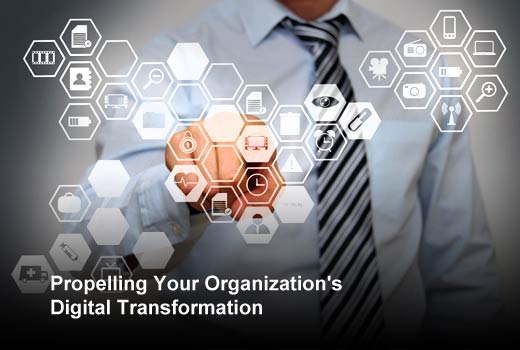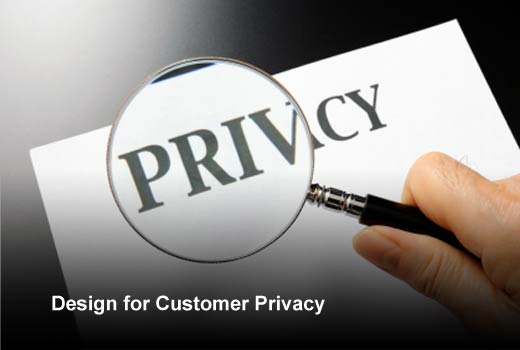As the number of users, cloud services and connected devices grows, businesses must link physical and digital worlds to stay ahead of competitors, and one way to do that is through a process referred to as digital transformation, the application of corporate IT resources to both an organization’s employees and its external customer base. This synergy helps to build a digital business that can drive increased revenue by delivering secure, personalized customer experiences across all channels. And the foundation to any digital business strategy begins with an identity and access management (IAM) solution that will not restrain new customer-focused initiatives.
Identity is the key to understanding customers. Unifying the digital identities of people, devices and things across all channels provides businesses with greater insight into a customer’s preferences and buying history. Digital businesses that effectively utilize identity can increase revenue and build lasting relationships with customers by creating relevant and timely experiences.
However, undergoing a digital transformation is not easy. To become a successful digital business, organizations must look for an identity platform that empowers them to provide seamless and secure omni-channel user experiences. Daniel Raskin, vice president of strategy at ForgeRock, has identified the top five ways identity can propel your organization’s digital transformation.
Propelling Your Organization’s Digital Transformation
Click through for the top five ways identity can propel your organization’s digital transformation, as identified by Daniel Raskin, vice president of strategy at ForgeRock.
Design for Customer Privacy
Organizations face complex privacy and consent challenges when it comes to sharing customer information. According to Pew Research, 91 percent of Americans agree or strongly agree that consumers have lost control over data collection and use of personal information. Customers want to be in control of what devices, cloud services, applications and users their data is shared with, for how long and under what conditions.
Businesses should look to create transparent privacy and consent solutions that empower customers to control their personal data. Digital businesses can improve user experience, build customer trust and increase operational efficiency by providing a centralized location for authorizing, controlling and sharing data. The identity platforms they select should serve as the foundation for selective sharing of customer information by ensuring that only the correct parties have access to personal data. Simple, secure data sharing is essential for the growth of digital business.
Look to Open Source Software
Look to open source software for a competitive advantage.
Building a digital business places tremendous strain on legacy identity solutions. Often, these solutions were designed for management of employee identities at small scale. They are inflexible and unable to respond to the constantly evolving needs of a customer-focused digital business. A digital transformation requires systems that can be quickly implemented and constantly evolved to meet changing market requirements.
Commercial open source software offers organizations increased flexibility and transparency as well as more reliable security. With commercial open source software, organizations have visibility into the solution roadmap as well as the opportunity to collaborate with the software vendor to create a shared vision. Even ongoing management is easier because bug fixes, security patches and other customer problems can be resolved more rapidly and collaboratively since everyone can “look under the hood” and examine the source code. For businesses competing in the rapidly evolving digital market place, open source software is a competitive advantage.
Unify the Customer Experience
Customers interact with businesses across numerous touch points including online and in-store. This can make it difficult for organizations to provide a tailored and seamless experience across all channels, compounding the existing challenges of retaining and capturing customers. Businesses that want to connect their physical and digital worlds also face internal infrastructure barriers. Customer data is siloed across different identity platforms, cloud services and connected devices, leading to a fractured view of the customer.
To overcome this hurdle, digital businesses should implement IAM systems that can unify customer identity. Identity unification provides valuable insight into customer behavior, tastes and preferences, enabling digital businesses to personalize interactions across all channels, digital or physical. By interacting with customers in more authentic ways, digital businesses can build lasting relationships, gain a competitive advantage, improve the customer experience and grow revenue.
Secure Against Breaches and Hacks
Major breaches of customer data have become commonplace. Corporations, such as Anthem and Target, have fallen prey to hackers, leading to lost customers, revenue and jobs. Organizations deal with the risk of identity fraud and malicious attacks on a daily basis.
To protect customer trust, businesses must provide a secure digital experience and adopt new security protocols. It is no longer sufficient to only check that a user is verified. The process must continue throughout the customer’s time in the system, constantly checking credentials to ensure they are not a malicious actor. The new reality of digital security requires a proactive approach that uses context to measure risk and protect customer data. Building customer trust and loyalty is key to driving recurring revenue. A thriving digital business should not be compromised by inadequate security.
Be IoT Ready
The Internet of Things (IoT) has arrived. Gartner predicts there will be nearly 5 billion IoT devices in use by the end of 2015 and 25 billion devices by 2020. However, many organizations lack an IoT ready infrastructure to deliver experiences to new connected devices and cloud services. In order to be a successful digital business, organizations must be able to securely manage devices and things and control the relationships that arise with the IoT. As the recent Jeep and Hospira Infusion Pump hacks show, the IoT must be secured with the same level of care as the enterprise.
As you define your IoT strategy, look for identity solutions that offer seamless, personalized and secure user experiences across all devices, connected things and cloud services. This allows organizations to be first to market with new digital offerings and maximize revenue by establishing early customer relationships.








